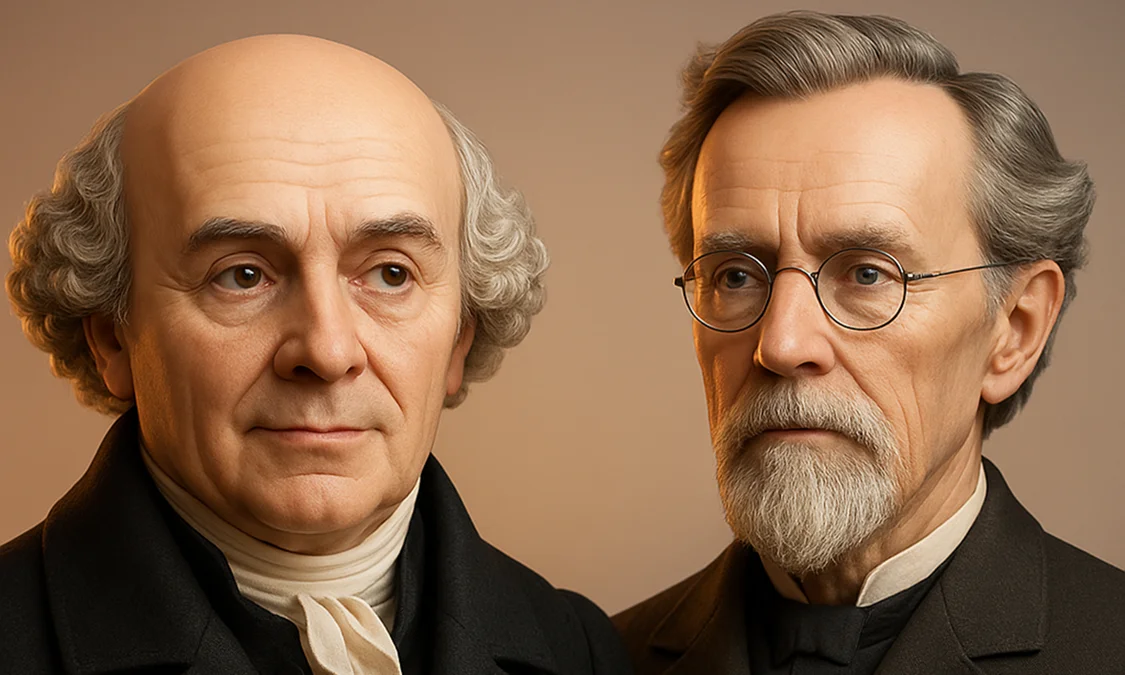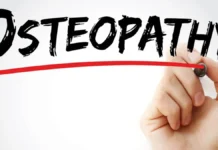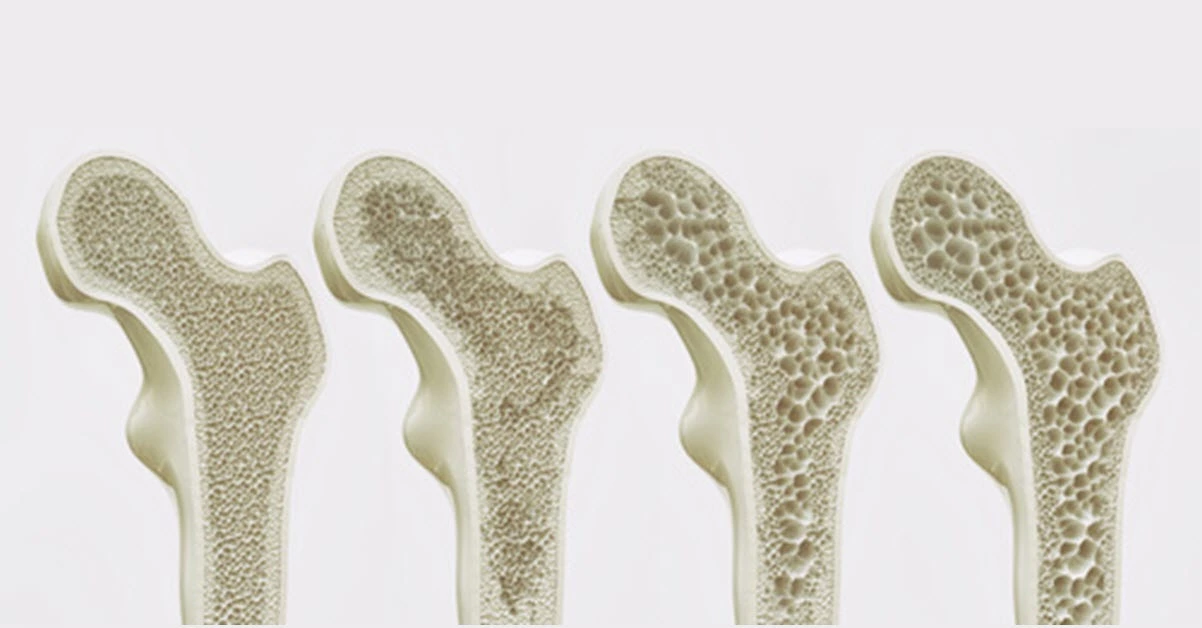Founders of Medical Systems
Samuel Hahnemann and Andrew Taylor Still, both pioneers in the realm of healthcare, founded two distinct medical systems that have left indelible marks on the field of medicine. Hahnemann, credited with the creation of homeopathy, and Still, the visionary behind osteopathy, each forged revolutionary paths that continue to influence modern healthcare practices.
Hahnemann, a German physician born in 1755, is celebrated as the father of homeopathy. Dissatisfied with the conventional medical practices of his time, which often relied on harmful interventions like bloodletting and purging, Hahnemann sought a gentler, more holistic approach to healing. His experimentation with small doses of substances and the principle of “like cures like” laid the foundation for homeopathy. Central to his philosophy was the belief that the body has an inherent ability to heal itself when stimulated appropriately. Through rigorous experimentation and meticulous observation, Hahnemann developed a system of dilution and succussion to potentize remedies, making them safe and effective. Today, homeopathy remains a popular alternative medicine practice, valued for its individualized approach and minimal side effects.
In contrast, Andrew Taylor Still, born in 1828 in the United States, embarked on a quest to reform the medical practices of his era. Trained as a conventional physician, Still grew disillusioned with the prevailing methods, which often prioritized symptom suppression over addressing the underlying causes of disease. Inspired by his own experiences and observations, Still envisioned a holistic approach to healthcare that emphasized the body’s innate ability to heal itself. He articulated the principles of osteopathy, advocating for a comprehensive understanding of the musculoskeletal system’s role in maintaining health. Still’s groundbreaking insights led to the development of osteopathic manipulative treatment (OMT), a hands-on approach to diagnosing and treating various ailments by restoring balance and function to the body’s structures. Osteopathy gained recognition as a distinct medical system, emphasizing the interconnectedness of the body’s systems and the importance of treating the patient as a whole.
While Hahnemann and Still operated in different historical and cultural contexts, they shared a common vision of revolutionizing healthcare through innovative and patient-centered approaches. Their enduring legacies continue to inspire practitioners and patients alike, underscoring the timeless relevance of their contributions to medical science. As the founders of homeopathy and osteopathy, respectively, Samuel Hahnemann and Andrew Taylor Still occupy esteemed positions in the annals of medical history, their pioneering spirit serving as a beacon for future generations of healthcare professionals.
Holistic Approach
Both Samuel Hahnemann and Andrew Taylor Still were staunch proponents of a holistic approach to healing, albeit within the frameworks of their respective medical systems. Hahnemann, the founder of homeopathy, and Still, the visionary behind osteopathy, shared a fundamental belief in treating the whole person rather than merely alleviating symptoms.
Hahnemann’s holistic philosophy was encapsulated in the principle of “like cures like,” a cornerstone of homeopathy. This principle posits that a substance capable of producing symptoms in a healthy individual can, in minute doses, stimulate the body’s innate healing mechanisms to overcome similar symptoms in a diseased individual. By carefully selecting remedies tailored to each patient’s unique symptomatology and constitution, Hahnemann aimed to address the underlying imbalances contributing to illness, rather than merely suppressing outward manifestations. This individualized approach to treatment underscores Hahnemann’s commitment to viewing patients as complex beings with physical, mental, and emotional dimensions that must be addressed in tandem.
Similarly, Still’s holistic approach to healthcare challenged the reductionist tendencies prevalent in conventional medicine of his time. Rejecting the notion of the body as a collection of disparate parts, Still emphasized the interconnectedness of its systems and the pivotal role of proper musculoskeletal alignment in maintaining health. He asserted that disruptions in the body’s structural integrity could compromise its ability to function optimally, leading to disease and dysfunction. Through osteopathic manipulative treatment (OMT), Still sought to restore balance and harmony to the body by addressing musculoskeletal imbalances and facilitating the flow of vital energy. By treating the body as a unified whole, rather than a sum of its parts, Still’s holistic approach aimed to empower patients to take an active role in their own healing process.
Despite the conceptual differences between homeopathy and osteopathy, both Hahnemann and Still recognized the importance of considering the broader context in which illness arises. Their holistic approaches emphasized the interconnectedness of physical, mental, and emotional factors in shaping health outcomes. By addressing the root causes of illness and supporting the body’s innate healing capacities, Hahnemann and Still paved the way for a more integrated and patient-centered approach to healthcare that continues to resonate with practitioners and patients alike.
Emphasis on Individualized Treatment
Individualized treatment lies at the core of both homeopathy and osteopathy, reflecting a deep understanding of the uniqueness of each individual’s health and healing journey. Both Samuel Hahnemann, the founder of homeopathy, and Andrew Taylor Still, the father of osteopathy, recognized that a one-size-fits-all approach to healthcare is inadequate. Instead, they advocated for tailoring treatments to the specific needs of each patient.
In homeopathy, this principle is exemplified by the concept of “like cures like” and the use of highly diluted remedies. Hahnemann believed that substances which produce symptoms similar to those experienced by the patient could stimulate the body’s self-healing mechanisms. However, the choice of remedy is not solely based on the presenting symptoms; it also considers the individual’s unique constitution, emotional state, and lifestyle factors. Homeopathic practitioners meticulously assess these aspects to prescribe the most appropriate remedy for each patient, ensuring a holistic approach to healing.
Similarly, osteopathy adopts a patient-centered approach, focusing on restoring the body’s natural balance and function. Andrew Taylor Still emphasized the importance of considering the whole person rather than just the symptoms of disease. Osteopathic treatment involves hands-on techniques to manipulate muscles, joints, and tissues, aiming to alleviate pain, improve mobility, and enhance overall well-being. Osteopaths assess not only the presenting complaint but also the underlying biomechanical dysfunctions and lifestyle factors contributing to the patient’s condition. By addressing the root causes of dysfunction, osteopathic treatment promotes long-term healing and prevents recurrence.
Both homeopathy and osteopathy recognize the interconnectedness of physical, mental, and emotional aspects of health. They acknowledge that symptoms manifest differently in each individual and that effective treatment requires a personalized approach. In today’s healthcare landscape, where standardized protocols and pharmaceutical interventions often overshadow individual needs, the emphasis on individualized treatment offered by homeopathy and osteopathy is particularly relevant.
Moreover, the personalized nature of these approaches fosters a strong therapeutic alliance between practitioner and patient. By actively involving patients in their healing process and honoring their unique experiences, homeopaths and osteopaths empower individuals to take ownership of their health and make informed decisions about their care. This collaborative approach not only enhances treatment outcomes but also promotes patient satisfaction and adherence to therapy.
Focus on Natural Healing
Samuel Hahnemann and Andrew Taylor Still, the founders of homeopathy and osteopathy, respectively, shared a common commitment to promoting natural methods of healing that harness the body’s inherent ability to restore balance and vitality. Both medical systems prioritize the use of gentle, non-invasive techniques derived from natural sources, eschewing the harsh interventions and synthetic drugs often associated with conventional medicine.
In the realm of homeopathy, Hahnemann advocated for the use of highly diluted substances derived from plants, minerals, and other natural sources. Central to the practice of homeopathy is the principle of “like cures like,” whereby substances that produce symptoms resembling those of a particular illness are administered in minute doses to stimulate the body’s self-healing mechanisms. Through a process of dilution and succussion, homeopathic remedies are potentized to enhance their therapeutic efficacy while minimizing the risk of adverse effects. By harnessing the healing properties of nature in this manner, Hahnemann sought to address the underlying imbalances contributing to illness without imposing undue stress on the body’s delicate equilibrium.
Similarly, Andrew Taylor Still championed natural methods of healing within the framework of osteopathy. Rather than relying on invasive procedures or pharmaceutical interventions, osteopathic physicians employ a variety of hands-on techniques to facilitate the body’s innate healing processes. Osteopathic manipulative treatment (OMT), the cornerstone of osteopathic practice, encompasses a range of gentle manual therapies designed to restore proper musculoskeletal alignment, improve circulation, and alleviate tension and discomfort. By addressing structural imbalances and facilitating the flow of vital energy throughout the body, OMT aims to optimize the body’s inherent capacity for self-repair and regeneration.
Both homeopathy and osteopathy share a fundamental respect for the wisdom of nature and the body’s intrinsic healing abilities. By harnessing the therapeutic potential of natural substances and non-invasive techniques, Hahnemann and Still sought to empower patients to take an active role in their own healing journey. Moreover, by minimizing reliance on synthetic drugs and invasive procedures, these holistic approaches prioritize patient safety and well-being while honoring the interconnectedness of mind, body, and spirit. In a healthcare landscape increasingly dominated by pharmaceuticals and technology, the enduring appeal of homeopathy and osteopathy lies in their ability to offer gentle, natural alternatives that support health and vitality at the deepest levels of being.
Challenging Traditional Medical Practices
Samuel Hahnemann and Andrew Taylor Still were pioneers in challenging the traditional medical practices of their respective eras, advocating for more humane and effective approaches to healthcare.
Hahnemann, living in the 18th century, witnessed the harsh and often detrimental treatments administered by mainstream medicine. Practices such as bloodletting, purging, and the use of toxic substances were common, often causing more harm than good to patients. Disillusioned by the prevailing medical paradigm, Hahnemann began to explore alternative methods of healing. His dissatisfaction with the conventional medical practices of his time led him to develop the principles of homeopathy, which offered a gentler and more individualized approach to treatment. By diluting substances to minimize toxicity and employing the principle of “like cures like,” Hahnemann challenged the prevailing medical orthodoxy and paved the way for a more compassionate and effective form of medicine.
Similarly, Andrew Taylor Still, a 19th-century physician, questioned the effectiveness of conventional medical treatments and sought alternative approaches to healthcare. Disappointed by the limited success of mainstream medicine in treating his own family’s illnesses, Still embarked on a quest to discover a more holistic and patient-centered approach to healing. His observations of the body’s innate ability to heal itself and his belief in the interconnectedness of body, mind, and spirit inspired him to develop osteopathy. Rejecting the use of harsh interventions such as drugs and surgery, Still advocated for hands-on techniques to restore the body’s natural balance and function. By challenging the prevailing dogmas of his time and offering a new paradigm of healthcare, Still laid the foundation for osteopathy as a distinct and effective healing art.
Both Hahnemann and Still faced resistance and criticism from the medical establishment for their unconventional ideas and practices. However, their unwavering commitment to their principles and their dedication to the well-being of their patients eventually led to the acceptance and recognition of homeopathy and osteopathy as legitimate forms of medicine.
Pioneers in Medical Innovation
Samuel Hahnemann and Andrew Taylor Still stand as towering figures in the annals of medical history, revered as pioneers in medical innovation whose groundbreaking contributions continue to reverberate in the field of healthcare today. In an era dominated by conventional medical practices characterized by bloodletting, purging, and other harmful interventions, Hahnemann and Still dared to challenge the status quo, introducing revolutionary concepts and methodologies that heralded a new era in medicine.
Hahnemann’s journey into medical innovation began with his rejection of the prevailing medical practices of his time, which he deemed ineffectual and often harmful to patients. Dissatisfied with the symptomatic approach to treatment favored by conventional medicine, Hahnemann embarked on a quest to uncover gentler, more holistic methods of healing. His experimentation with small doses of natural substances and the principle of “like cures like” laid the groundwork for homeopathy, a system of medicine founded on the belief that the body possesses an inherent capacity to heal itself when stimulated appropriately. Through rigorous experimentation and meticulous observation, Hahnemann developed a sophisticated system of dilution and succussion to potentize remedies, making them safe and effective for a wide range of ailments. His pioneering efforts not only challenged the prevailing medical orthodoxy but also paved the way for a more individualized and patient-centered approach to healthcare.
Similarly, Andrew Taylor Still’s journey into medical innovation was driven by his dissatisfaction with the limitations of conventional medicine and his quest for a more holistic understanding of health and disease. Trained as a conventional physician, Still grew disillusioned with the reductionist tendencies prevalent in his field, which often focused on treating symptoms rather than addressing the underlying causes of illness. Inspired by his own experiences and observations, Still articulated the principles of osteopathy, advocating for a comprehensive understanding of the body’s interconnected systems and the pivotal role of proper musculoskeletal alignment in maintaining health. Through osteopathic manipulative treatment (OMT), Still introduced a hands-on approach to healing that aimed to restore balance and harmony to the body, thereby promoting optimal health and vitality.
Despite facing skepticism and opposition from the medical establishment, both Hahnemann and Still remained steadfast in their commitment to medical innovation, forging new paths that diverged from mainstream medical practices of their era. Their pioneering contributions laid the foundation for the development and evolution of homeopathy and osteopathy as distinct fields of medicine, inspiring generations of practitioners to embrace holistic and patient-centered approaches to healing. Today, their legacies endure as testaments to the power of innovation and the enduring quest for a more humane and effective approach to healthcare.
Legacy of Influence
The legacies of Samuel Hahnemann and Andrew Taylor Still resonate profoundly in the fields of homeopathy and osteopathy, respectively, leaving an enduring influence that transcends time and continues to shape the practice of alternative medicine today.
Hahnemann’s groundbreaking work laid the foundation for homeopathy, a system of medicine based on the principles of “like cures like” and individualized treatment. His meticulous observations and tireless experimentation led to the development of a comprehensive system of healing that emphasized the importance of treating the whole person, rather than just the symptoms of disease. Hahnemann’s writings, including his seminal work “The Organon of the Medical Art,” remain essential texts for homeopathic practitioners worldwide. His legacy of rigorous inquiry, compassionate care, and commitment to patient-centered medicine continues to inspire and guide practitioners as they navigate the complexities of modern healthcare.
Similarly, Andrew Taylor Still’s visionary insights revolutionized the practice of medicine, giving rise to osteopathy as a distinct and effective healing art. Still’s holistic approach to healthcare, grounded in the belief that the body has an inherent capacity for self-healing, challenged the prevailing medical orthodoxy of his time. Rejecting the use of drugs and surgery in favor of hands-on manipulation and natural remedies, Still paved the way for a more gentle, non-invasive approach to treating illness and promoting wellness. His teachings, encapsulated in his seminal work “The Philosophy and Mechanical Principles of Osteopathy,” continue to inform and inspire osteopathic practitioners as they strive to optimize health and well-being for their patients.
The influence of Hahnemann and Still extends far beyond the confines of their respective disciplines, shaping the broader landscape of alternative medicine and holistic healthcare. Their emphasis on individualized treatment, holistic healing, and the body’s innate capacity for self-regulation has resonated with practitioners and patients alike, driving a paradigm shift towards more patient-centered and integrative approaches to healthcare.
Today, the legacies of Hahnemann and Still are perpetuated by a global community of practitioners dedicated to upholding the principles of homeopathy and osteopathy. Through ongoing research, education, and clinical practice, these practitioners honor the rich tradition of their respective disciplines while adapting to the evolving needs of modern society. As the demand for holistic and personalized healthcare continues to grow, the enduring influence of Hahnemann and Still serves as a beacon of inspiration for future generations of healers committed to advancing the art and science of alternative medicine.
Focus on the Mind-Body Connection
The mind-body connection stands as a cornerstone in understanding health and healing, as recognized by pioneers such as Hahnemann and Still. Their insights paved the way for a holistic approach to medicine that acknowledges the intricate interplay between mental and physical well-being.
Hahnemann, the founder of homeopathy, delved into the profound influence of mental and emotional states on health. He posited that imbalances in one’s emotional and mental realms could manifest as physical ailments. For instance, chronic stress or unresolved emotional traumas might manifest as physical symptoms, highlighting the profound link between the mind and body. Hahnemann’s emphasis on treating the individual as a whole, rather than merely addressing isolated symptoms, underscores the importance of considering mental and emotional factors in healing.
Similarly, Andrew Taylor Still, the founder of osteopathy, emphasized the interconnectedness of physical health and mental well-being. He understood that the body’s structure and function are intimately linked with its ability to maintain balance and vitality. Still believed that physical dysfunctions could stem from imbalances in the body’s self-regulating mechanisms, which are influenced by emotional and psychological factors. By addressing these underlying imbalances and restoring the body’s natural ability to heal itself, osteopathy aims to promote not only physical but also mental wellness.
Both Hahnemann and Still recognized that true healing goes beyond the alleviation of physical symptoms; it entails restoring harmony within the individual on all levels—physical, mental, and emotional. Their holistic approach to medicine emphasizes the importance of considering the mind-body connection in diagnosis and treatment.
In contemporary healthcare, the significance of the mind-body connection continues to gain recognition. Integrative medicine approaches, which combine conventional and complementary therapies, often prioritize addressing mental and emotional factors alongside physical symptoms. Practices such as mindfulness meditation, cognitive-behavioral therapy, and yoga have been shown to positively impact both mental well-being and physical health.
Moreover, research in fields like psychoneuroimmunology underscores the intricate communication between the brain, immune system, and other bodily systems. Studies have demonstrated how emotions, thoughts, and beliefs can influence immune function, hormone levels, and even gene expression, further highlighting the profound impact of the mind on the body’s physiological processes.
Critical of Conventional Medicine
Criticism of conventional medicine has been a recurring theme throughout history, often driven by the recognition of its limitations and the desire for alternatives that prioritize patient well-being. Two prominent figures who exemplify this sentiment are Samuel Hahnemann, the founder of homeopathy, and Andrew Taylor Still, the founder of osteopathy. Both were pioneers in their respective fields and were deeply critical of the prevailing medical practices of their time.
Hahnemann, a German physician practicing in the late 18th century, was profoundly disillusioned with the conventional medical treatments of his era. He observed the rampant use of harmful interventions such as bloodletting, purging, and the administration of toxic substances like mercury. Recognizing the detrimental effects these methods had on patients, Hahnemann sought a gentler and more holistic approach to healing. This dissatisfaction with the aggressive and often harmful practices of mainstream medicine led him to develop the principles of homeopathy. Homeopathy emphasizes the use of highly diluted substances to stimulate the body’s innate healing abilities, aiming to treat the root cause of illness rather than merely addressing symptoms. Hahnemann’s rejection of conventional medicine was not merely a critique; it was a call to action for a more compassionate and patient-centered approach to healthcare.
Similarly, Andrew Taylor Still, a physician practicing in the late 19th century in the United States, was disillusioned with the conventional medical practices of his time. Still, a former surgeon and Civil War medic, witnessed firsthand the shortcomings of mainstream medicine. He questioned the prevalent use of interventions such as bloodletting, blistering, and opium-based remedies, which often caused more harm than good. Dissatisfied with the reductionist approach of focusing solely on treating symptoms without addressing the underlying causes of disease, Still sought to revolutionize medical practice. He envisioned a more comprehensive and patient-centered approach to healthcare, one that recognized the interconnectedness of the body, mind, and spirit. This vision led to the development of osteopathy, a system of medicine that emphasizes the importance of the musculoskeletal system in maintaining health and treating disease. Osteopathy promotes the body’s ability to heal itself through manual manipulation and other non-invasive techniques, aiming to restore balance and harmony within the body.
Emphasis on Preventive Medicine
Hahnemann and Still, two influential figures in the history of medicine, shared a common emphasis on preventive medicine, recognizing its pivotal role in maintaining health and well-being.
Hahnemann, the founder of homeopathy, believed in the principle of “like cures like” and advocated for the use of homeopathic remedies not only for treating acute and chronic ailments but also for preventing illness. He asserted that by administering highly diluted substances that mimic the symptoms of a particular disease, the body’s innate healing response could be stimulated, thereby strengthening its resistance to future illness. Hahnemann’s approach to preventive medicine focused on addressing underlying imbalances in the body before they could manifest as overt symptoms, thereby promoting long-term health and vitality.
Similarly, Andrew Taylor Still, the father of osteopathy, emphasized the importance of preventive measures in maintaining health and preventing disease. Central to osteopathic philosophy is the principle that the body has an inherent ability to heal itself when provided with the right conditions. Still advocated for a holistic approach to wellness, which encompassed not only the treatment of existing ailments but also the promotion of healthy lifestyle habits. He stressed the importance of proper diet, regular exercise, adequate rest, and stress management in supporting the body’s natural healing mechanisms and preventing the onset of illness.
Both Hahnemann and Still recognized that disease often arises from imbalances in the body’s internal environment, which can be exacerbated by external factors such as poor nutrition, sedentary lifestyle, and chronic stress. By addressing these underlying imbalances and promoting health-promoting behaviors, they believed that individuals could significantly reduce their risk of developing chronic diseases and maintain optimal health throughout their lives.
In contemporary healthcare, the importance of preventive medicine continues to be widely acknowledged. Healthcare practitioners increasingly recognize the value of promoting healthy lifestyle habits and implementing strategies to prevent disease before it occurs. Public health initiatives aimed at increasing awareness of the importance of diet, exercise, stress management, and other preventive measures play a crucial role in empowering individuals to take control of their health and well-being.
Innovative Treatment Modalities
Both Samuel Hahnemann and Andrew Taylor Still were revolutionary figures in the history of medicine, each introducing innovative treatment modalities that challenged the conventional practices of their time and paved the way for alternative approaches to healing.
Hahnemann’s contributions to medicine primarily revolve around the development of homeopathy. Central to this system is the concept of potentization, a process whereby substances are repeatedly diluted and succussed, or vigorously shaken, to enhance their therapeutic effects. Hahnemann believed that this process not only increased the potency of the remedies but also minimized any potential toxicity, making them safer for patients. This approach was a radical departure from the prevailing medical practices of the late 18th century, which often relied on aggressive and sometimes harmful interventions. By harnessing the principle of “like cures like” and utilizing highly diluted substances, Hahnemann sought to stimulate the body’s innate healing abilities and address the underlying causes of illness rather than merely suppressing symptoms.
In contrast, Andrew Taylor Still’s innovations in medicine centered around osteopathy, a system of healthcare that emphasizes the importance of the musculoskeletal system in maintaining health and treating disease. Still believed that the body has an inherent ability to heal itself and that many diseases can be traced back to structural imbalances or dysfunctions within the body. To address these issues, he developed osteopathic manipulative techniques, including manipulation of the spine, joints, and soft tissues, to restore proper alignment and function. By correcting structural abnormalities and improving circulation and nerve function, Still believed that osteopathy could facilitate the body’s natural healing process and promote overall health and well-being.
Both Hahnemann and Still’s innovative treatment modalities challenged the prevailing paradigms of their respective times. Hahnemann’s potentization process introduced a new way of preparing remedies that focused on maximizing therapeutic effects while minimizing potential side effects. Similarly, Still’s osteopathic manipulative techniques offered a non-invasive and holistic approach to healthcare that aimed to address the root causes of illness rather than merely treating symptoms. These contributions laid the foundation for alternative systems of medicine that continue to be practiced and studied today, highlighting the enduring impact of their innovative approaches to healing.
Commitment to Education and Training
Samuel Hahnemann and Andrew Taylor Still, both trailblazers in the field of medicine, shared a deep commitment to education and training within their respective disciplines, laying the foundation for the advancement of homeopathy and osteopathy.
Hahnemann, the visionary founder of homeopathy, recognized the importance of formal education in nurturing future generations of homeopathic practitioners. In 1811, he established the first homeopathic medical school in Leipzig, Germany. This institution, known as the Leipzig University of Homeopathy, was dedicated to providing rigorous training in the principles and practices of homeopathic medicine. Hahnemann’s pioneering efforts in establishing a formal educational institution underscored his commitment to ensuring the continued growth and development of homeopathy as a legitimate branch of medicine.
Similarly, Andrew Taylor Still, the visionary founder of osteopathy, was a staunch advocate for education and training in his holistic approach to healthcare. In 1892, he founded the American School of Osteopathy in Kirksville, Missouri, which later evolved into A.T. Still University. This institution was the first osteopathic medical school in the world and played a pivotal role in educating osteopathic physicians in Still’s innovative approach to healthcare. Still’s curriculum emphasized hands-on manipulation techniques, anatomy, physiology, and osteopathic principles, reflecting his belief in the importance of a comprehensive understanding of the human body and its innate capacity for healing.
Both Hahnemann and Still were dedicated educators who sought to instill in their students not only the technical skills necessary for clinical practice but also a deep appreciation for the underlying principles of their respective disciplines. They believed that education was essential for advancing their fields and ensuring the highest standards of practice.
Their commitment to education extended beyond the classroom, as both Hahnemann and Still actively engaged in writing and publishing scholarly works to disseminate their teachings to a wider audience. Hahnemann’s seminal work, the “Organon of the Medical Art,” and Still’s “Philosophy of Osteopathy” are enduring classics that continue to serve as foundational texts for practitioners in their respective fields.
Advocates for Patient Empowerment
Hahnemann and Still, esteemed figures in the history of medicine, shared a common vision of patient empowerment and autonomy in healthcare. Both were staunch advocates for involving patients in their own healing processes and fostering greater understanding and participation in their healthcare decisions.
Samuel Hahnemann, the founder of homeopathy, believed deeply in the importance of patient education and empowerment. He emphasized the need for practitioners to thoroughly educate their patients about their health conditions and treatment options. Hahnemann viewed patients not merely as passive recipients of medical care but as active participants in their own healing journey. He believed that by empowering patients with knowledge and involving them in the decision-making process, they could make more informed choices about their health and play a more proactive role in managing their conditions.
Similarly, Andrew Taylor Still, the father of osteopathy, advocated for patient empowerment and autonomy in healthcare. He believed that the body has an innate capacity for healing and that patients should be active partners in the treatment process. Still encouraged practitioners to listen attentively to their patients, respect their individual needs and preferences, and collaborate with them to develop personalized treatment plans. He viewed the patient-practitioner relationship as a partnership based on mutual trust, respect, and communication.
Both Hahnemann and Still recognized that patient empowerment is essential for achieving optimal health outcomes. They understood that patients who feel empowered and engaged in their healthcare are more likely to adhere to treatment plans, experience better outcomes, and maintain long-term wellness. By empowering patients with knowledge and involving them in the decision-making process, practitioners can foster a sense of ownership and responsibility for their health, leading to greater satisfaction and improved quality of life.
In contemporary healthcare, the principles of patient empowerment espoused by Hahnemann and Still remain highly relevant. Healthcare practitioners increasingly recognize the importance of involving patients in their own care and promoting shared decision-making processes. Patient-centered care models, which prioritize the individual needs, preferences, and values of patients, are becoming increasingly prevalent in clinical practice.
Moreover, advancements in technology and communication have made it easier than ever for patients to access information about their health conditions and participate in their treatment decisions. Patients are increasingly empowered to take an active role in managing their health through tools such as patient portals, telemedicine platforms, and health apps.
Conclusion
In summary, Samuel Hahnemann and Andrew Taylor Still, as pioneers in homeopathy and osteopathy respectively, demonstrated a profound commitment to patient empowerment and autonomy in healthcare decision-making. Their advocacy for educating patients about their health conditions and involving them in the treatment process reflects a fundamental belief in the importance of collaboration and shared decision-making between healthcare providers and individuals seeking care. By prioritizing patient education, involvement, and autonomy, Hahnemann and Still laid the groundwork for a more patient-centered approach to healthcare that emphasizes the unique needs and preferences of each individual. Their enduring legacy continues to inspire healthcare practitioners to empower patients to take an active role in their own healing journey, fostering greater understanding, participation, and agency in the pursuit of health and well-being.




























